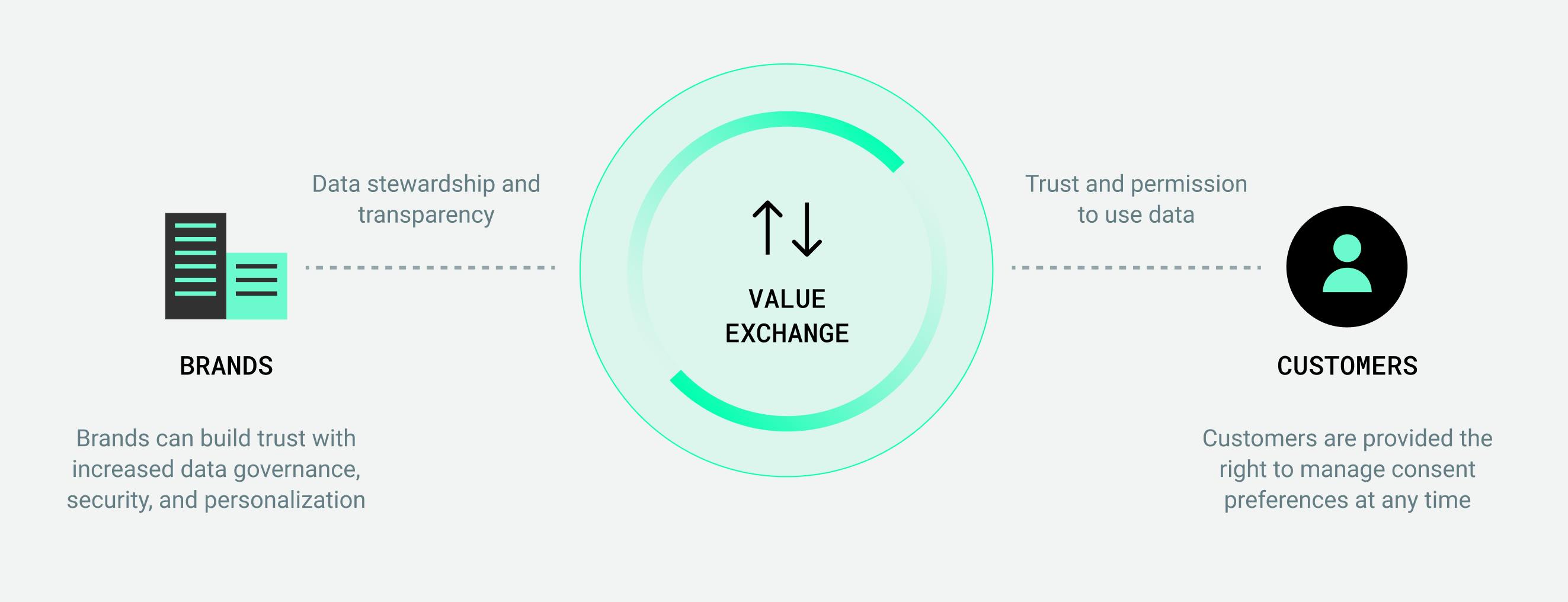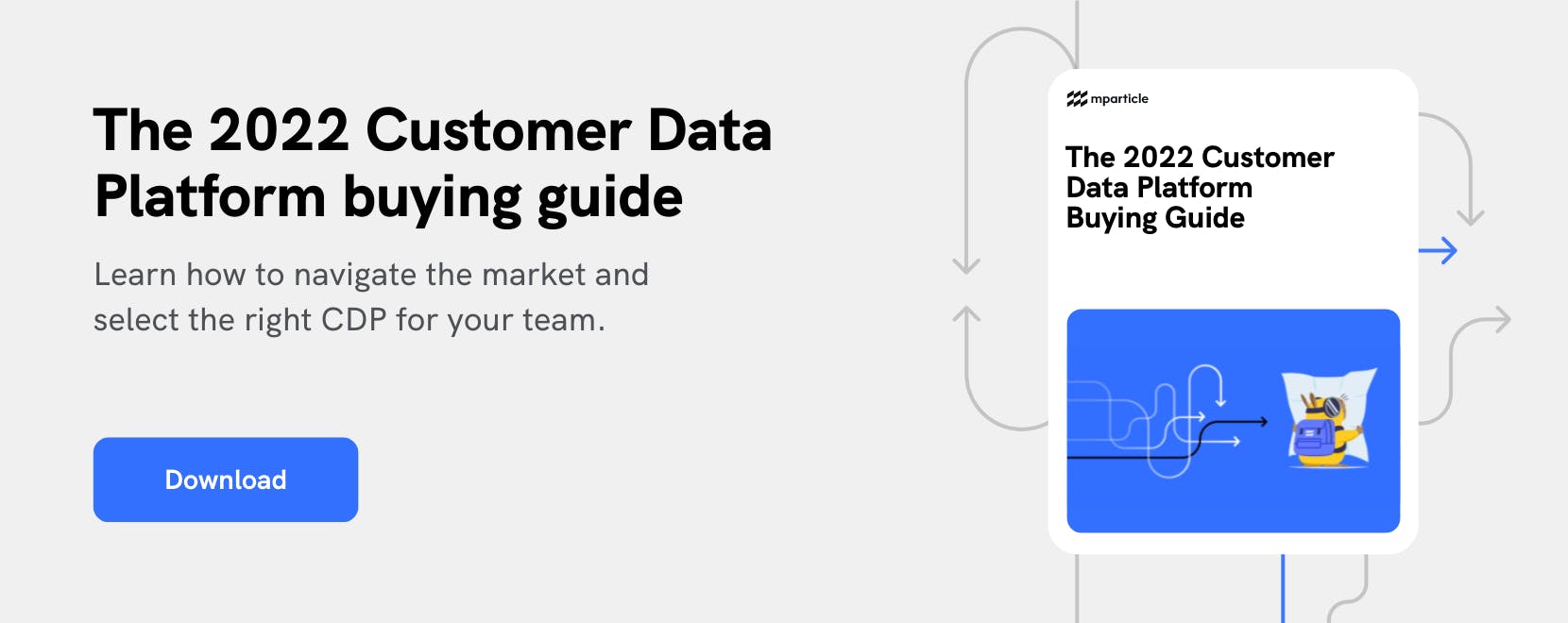How to build your first-party data strategy
The demise of third-party tracking presents brands with the opportunity to invest in modern data infrastructure and build trust with their customers. Learn how you can transform your data supply chain by developing a first-party data strategy.

Henry Ford revolutionized the automotive industry with the release of the Ford Model T in October, 1908. What made the car so impactful was not that it was the fastest or safest, but its price point–the Model T made automotive travel accessible to the majority of Americans for the first time.
Ford was able to list the Model T at such an affordable price by transforming the supply chain. While many cars of the era were built once-at-a-time by highly trained specialists, Ford designed an assembly line that allowed for production at scale, prioritizing quality of parts and collaboration of teams. Although attention is often focused on the end product, great business leaders, such as Apple’s Tim Cook, continue to emphasize the importance of mastering the supply chain.
Many teams today, however, do not just sell cars (or smartphones) and do no not operate factories. They write code, and deliver digital experiences through mobile apps, websites, and other channels.
Digital experiences are driven not by the assembly of chassis and axles, but by data. Think of the personalized recommendations from Netflix, or the seamless transactional emails from Airbnb. These experiences are built upon the ability to collect, organize, and activate data. They are the result of a different kind of assembly line–as Harvard Business Review recently coined it, a data supply chain.
Supply chains must evolve with the market, and your data supply chain is no exception. While many brands have relied upon third-party data to power campaigns and measure engagement, new market shifts, such as Apple’s App Tracking Transparency and Google’s deprecation of third-party cookies, are forcing teams to change their strategies. To evolve your data supply chain and optimize your digital experiences, you need to build a first-party data strategy.
Why first-party data, and not third-party data?
For the last few years, many teams have leveraged third-party data to power large scale personalization campaigns. Third-party data is data that is not collected through your owned properties, but instead is collected by a third-party and shared with you. Third-party data sets are more extensive than first-party data sets because they are not limited by the number of customers that you have engaging through your properties. They tend to be less rich, however, as they often lose metadata and identifiable information when being shared between parties.
Due to its scale, third-party data has often been favored for broad-reaching acquisition campaigns, such as paid display advertising. Several recent market shifts, however, have made this more difficult.
- Apple’s ATT framework and increasingly ‘anti-tracking’ stance
- Google’s looming depreciation of third-party cookies
- Consumers’ increasing awareness of data privacy and distaste to anonymous targeting
These trends, particularly the first two, have compromised many brands’ ability to perform two mechanisms essential for growth acquisition:
- Measurement: Tracking how well a campaign, creative set, or message is performing in a non-owned channel
- Targeting: Reaching a specific user with a specific message based on their past activity in a non-owned channel
Amidst the shifts away from third-party targeting, several have proposed methods for sidestepping new legislations and achieving the same use cases.
- Alternative identifiers: Certain vendors have promised the introduction of a universal identifier to replace the cookie and IDFA. Brands would be able to leverage this identifier across vendors and channels for measurement, targeting and more.
- Fingerprinting: Fingerprinting is the technique of using a cross-section of non-personally identifiable information, such as device type and location, to create a digital fingerprint of a user that can be tracked across channels.
- Probabilistic modeling: Probabilistic modeling ties engagements made by a single user across multiple devices to a unified customer profile by using predictive algorithms to link information such as IP address, operating system, location, wifi network, and behavioral data to a profile at a given confidence level (learn more about probabilistic identity resolution and how it differs from deterministic modelling here).
These workarounds offer a quick fix, but they also introduce complications. Factors such as privacy-conscious customers’ sentiment, ever-evolving privacy legislations (GDPR, CCPA), and the risk of App store rejection make these methods risky in terms of compliance, let alone consumer trust.
As Albert Einstein once said, “in the midst of every crisis, lies great opportunity.” The demise of third-party tracking has presented brands across industries with the opportunity to transform the way that they use data to reach their customers—to prioritize relevance over reach, and to rebuild customer trust.
How to build your first-party data strategy
As with building cars, there are multiple steps to delivering data-driven experiences. An effective, privacy-conscious first-party data strategy must account for the entire data lifecycle, from collection, to management and storage, to activation.
Collecting first-party data
Salesforce’s 2020 State of the Connected Customer reported that 83% of consumers are concerned about sharing personal data online and 72% would stop buying from a company or using a service because of privacy concerns. To successfully collect first-party data, you must create a data transaction that provides value for the customer and ensures trust by communicating transparency of use and responsible data governance.

Source: Boston Consulting Group. This image has been adapted from the original.
In Responsible Marketing with First Party Data, Boston Consulting Group (BCG) notes that advanced teams have followed three best practices when asking to track customer data.
- Visibility: They don’t hide banners, they design the ask with a neat user interface, and they make it easy to withdraw permission by giving users control
- Candor: They are upfront about the reasons for collecting data and the benefits of collection and usage
- Value: They highlight the incentives, such as a better customer experience, that comes from sharing data
Customer data can no longer be bought and sold. It is a privilege that must be earned through trust, and constantly re-earned through secure data governance.
Different types of companies connect with their customers in different ways, and data collection will therefore vary across industries. Brands with a direct relationship with their users, such as retail, financial services, and travel, have built their value exchange upon exclusive offerings, such as membership-only content and loyalty programs.
Companies in industries such as Consumer Packaged Goods (CPG) and Automotive often do not sell directly to consumers. These companies can build up their first-party data set by reaching their end customers with unique auxiliary digital offers. For example, the Weber charcoal grill I just bought arrived including a QR code to download their mobile app. The app is packed with 3D set-up instructions, grilling tips and recipe recommendations that have helped me avoid setting the house on fire.
Media and publishing companies in particular have been heavily reliant on third-party data, as many use third-party cookies to deliver ads through a Data Management Platform (DMP) and other Ad Tech solutions. As third-party tracking becomes more restricted, it will be important for publishers to invest in infrastructure that allows them to take ownership of their first-party data collection and use it to deliver relevant ad experiences to their readers. Certain publishers have already led the way in this transition, such as the New York Times, who are investing in first-party audiences and data science insights to power their advertising campaigns. You can read more about their progress so far here.
In addition to the challenges of building customer trust are the technical challenges of collecting first-party data. Every tool that you collect first-party data into requires an SDK implementation in your client side applications. With the average enterprise using dozens of marketing and analytics tools, managing this vendor code can become a headache for engineering, fast.
Customer Data Platforms (CDPs), such as mParticle, provide value here by helping you simplify your first-party data collection. CDPs collect customer data through SDK implementations or API connections, and then enable you to connect it out to any of your marketing, analytics, and data warehousing tools via server-side integrations. This allows engineers to spend less time on vendor code management and custom development, and enables marketing and product teams to access the data they need when and where they need it. Dive deeper into Customer Data Platforms here.
Data management and storage
Building a value exchange that encourages privacy-conscious customers to share their first-party data with you is difficult. But without secure data management and storage, customers’ trust can waver and all of your hard work can go to waste in an instant. Responsible data governance is critical, as a single lapse in data privacy can lead your customers to file a request for their data to be deleted or leave you vulnerable to a class action lawsuit.
- Consent management
One of the pillars of responsible data stewardship is secure lawful basis for processing, of which consent. Customer consent is the process through which customers signal their choices with respect to data uses. Ensuring that each customers’ data is being used in accordance with their consent preferences at all times is required for compliance. For example, when a customer visits your website, they may allow their data to be collected for analytics and security purposes but not for marketing and advertising purposes. It is your responsibility, therefore, to ensure that the data collected after those preferences are set is sent to the appropriate systems within your tech stack.
This can be achieved either by using your Consent Management Platform (CMP) settings to trigger which vendor SDKs fire after consent preferences are set by the user, or by integrating your CMP with your CDP to filter how data flows across your tech stack based on customer consent state. You can dive deeper into both of those strategies in this article. - Deterministic identity resolution
Consent management and other aspects of data governance, such as fulfilling data subject requests, are nearly impossible if you don’t know who your customers are. This challenge is less daunting if your customers are only engaging through a single touchpoint, as engagements and preferences can then be tied to a device-level identifier. Once your customers begin engaging across multiple touchpoints, such as a website and a mobile app, however, you need a way to tie device-level data to unified customer profiles. Without the ability to tie consent preferences declared in one channel to a unified customer profile, it’s possible that you’ll continue using a customers’ data collected from another channel in a way that violates their signaled preferences. Furthermore, if a customer files a data subject request, you may fulfill the request for data that exists in one system but fail to fulfill it for the data that is siloed in other systems. - Data storage
While activating first-party data in real time enables powerful use cases such as transactional messaging, equally important is the ability to cleanly store your data for the long term. Having first-party data in your data warehouse will enable you to leverage to build historical audience segments and run BI queries. A data warehouse is also an excellent place to combine data from different sources, such as device-level engagement data with transactional data. The traditional method for getting first-party data from the client side into your data warehouse is to use an analytics tracking tool, such as Snowplow Analytics, to collect data from the client side, and then an Extract, Transform, Load (ETL) tool such as Fivetran, to transfer data from your cloud app to your data warehouse. Alternatively, Customer Data Platforms allow you to collect data from client-side and server-side environments and export it to your data warehouse with a single tool.
What can you do with your first-party data?
Heavy use of third-party data has made it feasible for brands to follow a model of acquiring new customers, letting them churn, and re-acquiring them through retargeting campaigns. While this has allowed many companies to increase brand recognition and drive acquisition, it has also enabled them to avoid doing the hard work of figuring out how to build customer trust and loyalty.
First-party data, on the other hand, will help teams do the rewarding work of understanding their customers and delivering highly-relevant experiences throughout the customer lifecycle.
Retention
A lot of attention has been focused on initiatives designed to acquire new customers, but any experienced growth leader knows that strong customer retention is equally (if not more) important to success. In Bain’s Prescription for Cutting Costs whitepaper, Fred Reichheld reports that increasing customer retention by just 5% can result in a 25% increase in profits. Dumping money into acquiring customers that soon after churn, on the other hand, can result in a net loss.
First party data enables you to improve customer retention by helping you deliver a more relevant experience to your customers. By gaining an understanding of each customers’ preferences via their engagements with your products, you’re able to thoughtfully re-engage with customers through your owned channels and spread customer lifetime value (CLTV) over a longer period of time.
Customer Data Platforms provide support here by making it easier for growth teams to use their first-party data to deliver relevant experiences to their customers. For example, mParticle’s 280+ server-side integrations allow marketers and product managers to forward unified customer profiles to the customer engagement tools of their choice without any custom development, enabling them to power timely experiences, such as in-app recommendations and follow-up emails, that increase customer retention.
Happy customers also drive referrals and positive reviews, which in turn can lead to a significant source of new customers. For example, check out how ride sharing app Via managed to drive 85% of their growth through referrals by optimizing the product experience.
Personalization
While retention functions to spread CLTV over a longer period of time, personalization functions to raise the absolute lifetime value of each user.
Insights gained through first-party data analysis can be used to increase the relevancy of the experiences you delivered to your customers. Additionally, by running experiments and tying engagement metrics to your first-party customer profiles, you can increase the effectiveness of your campaigns over time. BCG research has shown that digital marketers that have the ability to deliver relevant experiences to customers at multiple moments across the purchase journey achieve cost savings of up to 30% and revenue increases of as much as 20%.
One of the challenges with using first-party data to create personalized experiences is that data is often siloed across a number of different systems. Every tool has its own identifier and its own segmentation engine, and translating data across tools requires hours of painstaking dev work. When each tool is operating with its own data set, it’s nearly impossible to coordinate personalized experiences throughout the customer journey.
Customer Data Platforms simplify this challenge by streamlining first-party data collection, deterministic identity resolution, and audience segmentation into a single system, and making it easy to forward profiles and audience segments to all of the growth tools you are using via server-side integrations. You’re able to design personalized experiences in each tool, confident that `first_name` in your email vendor will be the same value as `firstName` in your mobile push vendor.
For an example, see how Burger King used first-party data to power personalization in their infamous Whopper Detour campaign, which drove six million+ app downloads.




